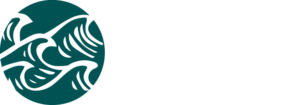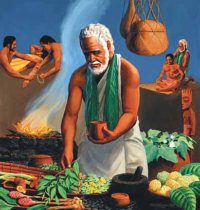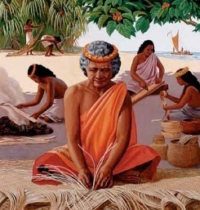SOAR HI
In partnership with Hawaii P-20, Castle High,
and King Intermediate School
PAF addresses urgent issues and helps build community reslience.
Investigating and Understanding Water Quality
Non-point pollution, Microorganisms, Sedimentation, EutrophicationPAF conducts water quality testing of the Waikalua Loko I'a, Kawa, Kaneohe Stream and Kaneohe Bay.
We use multiple YSI meters, and collect data of every kind.
Rain events, run-off, king tides, sewage spills and human waste contribute to the changing quality of water, which in turn affects the propagation and viability of animal life. Excessive nutrients due to runoff cause dense growth of algae and plankton, strangling animal life and food sources by depriving them of oxygen.
Sediment accumulates due to a variety of factors. Situated between kawa and Kaneohe fresh water streams, Waikalua has the poorest circulation in the entire Kaneohe Bay. After the great mahele in 1848 when Hawaiian lands were divided to include private land ownership, ponds became subject to problems. A more urbanized community also contributes to more run-off.
ʻŌpala and Microplastics are brought to the pond wall by the prevailing winds, damaging the ecology of the pond and impacting sea and bird life. This presents a great opportunity to educate children and adults about plastic consumption.
Sea Level Rise
Addressing rising water levels imperiling kuapā and food sourcesClimate change and destructive high tides
Our Waikalua fishpond experienced its first encounter with destructive “king tides” in 2016. The tide covered the existing kuapā wall and Kaneohe stream rose high enough to connect to the back of the pond as well.
Our ongoing project has included repairs to the kuapā wall and raising the wall by 3 feet, with completion expected in 2022.
Managing Invasive Species
Reducing/Eliminating their damage to fishpond functionalityEradicating Mangrove, Ongoing Aquatic Species Management Plans
In 2021, the last American Red Mangrove tree was removed from inside the Waikalua Loko Iʻa. Introduced in the late 1800ʻs to Hawaiʻi, invasive mangrove trees had severely depleted the oxygen available for animal life.
Grascilaria Salicornia (Gorilla Ogo) and Limu Replacement present ongoing management activities. Loko Iʻa volunteers routinely removed 50-100 tons of invasive ogo each year leading up to 2016 when the King Tides and a 1 degree F temp rise caused the species’ decline. Gorilla Ogo grows back within 30-45 days, so when minute amounts are detected, experience tells us to plant native limu manauea and control invasive re-growth.
Bringing Community to the Waikalua Loko I'a
Addressing Educational Objectives and Transportation NeedsThe Waikalua Loko I'a as a Community Classroom
Experiential Learning: Place-based and culturally appropriate educational opportunities, offering strategies to empower community and grow food.
Formal and Informal components inckyde events, aina based curricula, online 360” tours, La Ohana Days
Transportation for k-12 students to the pond
-school trips
-out-of-school-time opportunities
Repair and Conservation of the Kuapā, Mākāhā, and ʻAuwai
Ensuring the Vitality of the PondProtecting Food Sources
Our 3 “ʻauwai” (water passageways) which let the pond exchange tidal water daily. The mākākā (sluice gates) are critical components, keeping out unwanted predators like Barracuda and Hammerhead Sharks. Every two to three years our mākākā, made from recycled mangrove, must be replaced. We explore other mākākā construction methods, and hope to showcase different engineering designs through history.
The three concrete Kuapā walls, date from the 1930’s, and assist the ʻauwai system. Though stable, it requires repair and replacement. We are open to ideas on this as well.
Propagating Fish, Limu, Oyster and Sea Cucumber
26 new 1200 gallon tanks for R&DIn partnership with the University of Hawaii Sea Grant and Kauai Sea Farms
PAF will, in partnership with University of Hawaii Sea Grant, PAF and Kauai Sea Farms, undertake research and development to understand all of the factors that can contribute to the successful growing of fish (mullet & nenue), native limu, oysters and sea cucumbers. Our new tanks will provide opportunities for students of all ages to participate, learn and problem solve.





